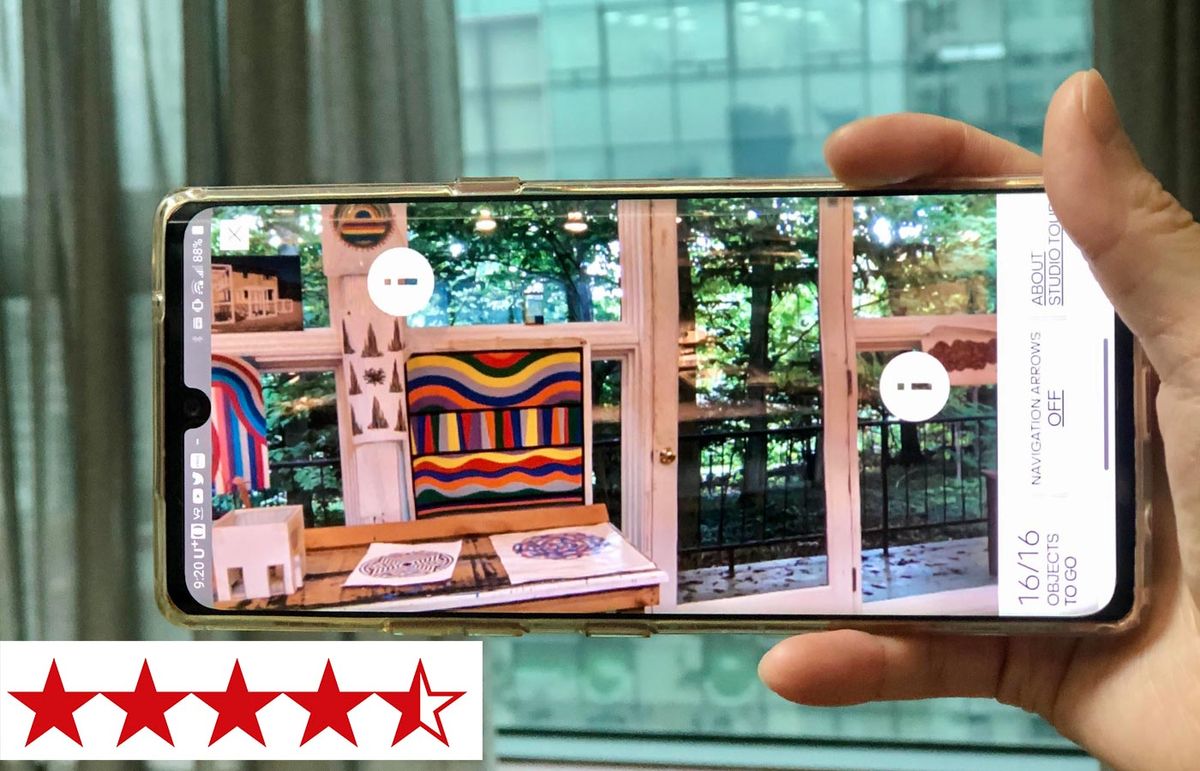What is it?
An AR and VR Immersive experience of the work, process and studio of the leading Conceptual and Minimalist artist Sol LeWitt (1928-2007). Launched September 2020.
The app is authored and curated by Lindsay Aveilhé, a New York-based curator and LeWitt specialist who takes a close interest in emerging technology in arts education. She is the editor of the Sol LeWitt Wall Drawings Catalogue Raisonné (2018), and co-editor (with Chris Vacchio) of Sol LeWitt Writings (2020) and Sol LeWitt Selected Interviews (2020).
Created by
Microsoft and the Sol LeWitt estate.
Where to Find it
Curator’s Note
Gretchen Andrew: It is a common complaint in the art world that those in the tech industry don’t support art at the scale of their brethren in the finance industry. With the tech industry the place to make a fortune, this is a real problem for the arts and artists.
If we think about the banking and art market shifts that occurred in the 1980s, we see a relationship where capital and culture reached frenzied alliance. Over these past three decades we have also seen instruments of financial trade divorced irrevocably from hard value. We see the rise of flash trading, subprime mortgages "packaged” with supposedly better securities and abstracted from homes; Enron trading energy as if oil physically moved like money; and the pre-eminence of derivatives where the directional value isn’t as important as the size of the change. Even in Warren Buffett’s principles of investing may be to the contrary, this is still the market we operate in.
And obviously, whatever interest financial professionals take in contemporary art moulds the art industry.
But I think we also need to consider the feedback loop, the vicious/virtuous cycle this creates. Not only does the culture of banking impact the art market, but in the art market, financial professionals see their own world view comfortingly reflected through the tenets of winning, exercising power, and ultimately the process of value invention discovered from anything except collective belief.
Good news! (Maybe?) The technology industry may finally have figured out how to care about art.
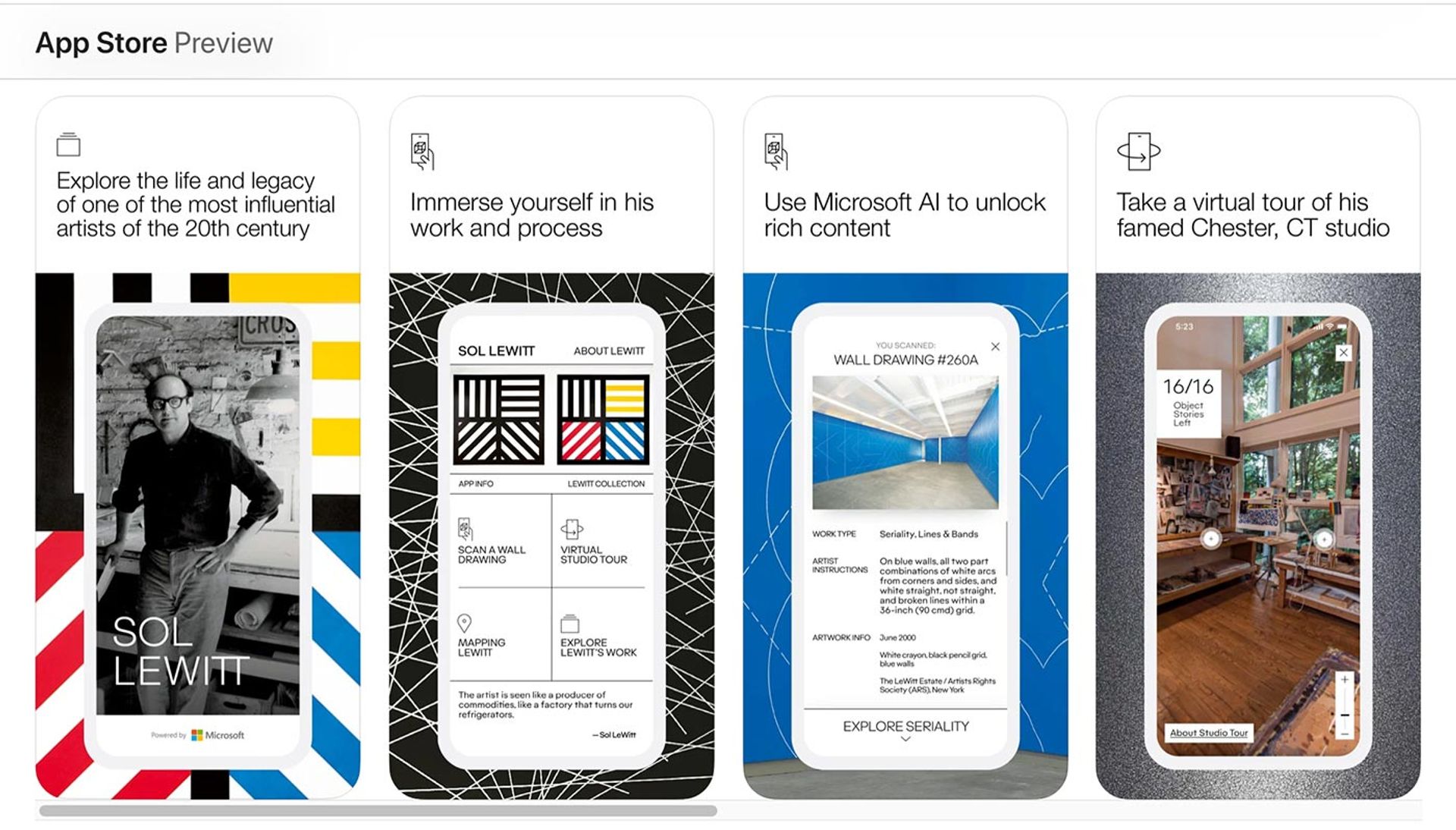
A similar taste in glasses: The App Store preview for the Sol LeWitt/Microsoft app
Go to Google Play or Apple’s app store to find Microsoft’s Sol LeWitt application and before you’ve downloaded it, you’ve agreed to three different nearly invisible relinquishments of data. Using art to collect data. This might just be art/tech’s “killer app”.
Your data’s relationship to your privacy may be as obscure to you as is a $58.4 million Jeff Koons balloon dog, but, better put, it is intentionally obscured to you. We know tech companies are making billions with this data stuff of ours, yet the truth is that we can’t really work ourselves up into enough of a fuss to value it ourselves.
I like the VR/AR experience of the late Sol LeWitt’s studio as an opportunity to talk about this. Not just because it was produced by Microsoft, but because of how inherently private an artist’s studio is. There is a poetic relationship between our virtual presence inside Sol LeWitt’s studio and the data we invisibly give to Microsoft by our presence there.
To bring these themes to the surface is the reason I selected this app.
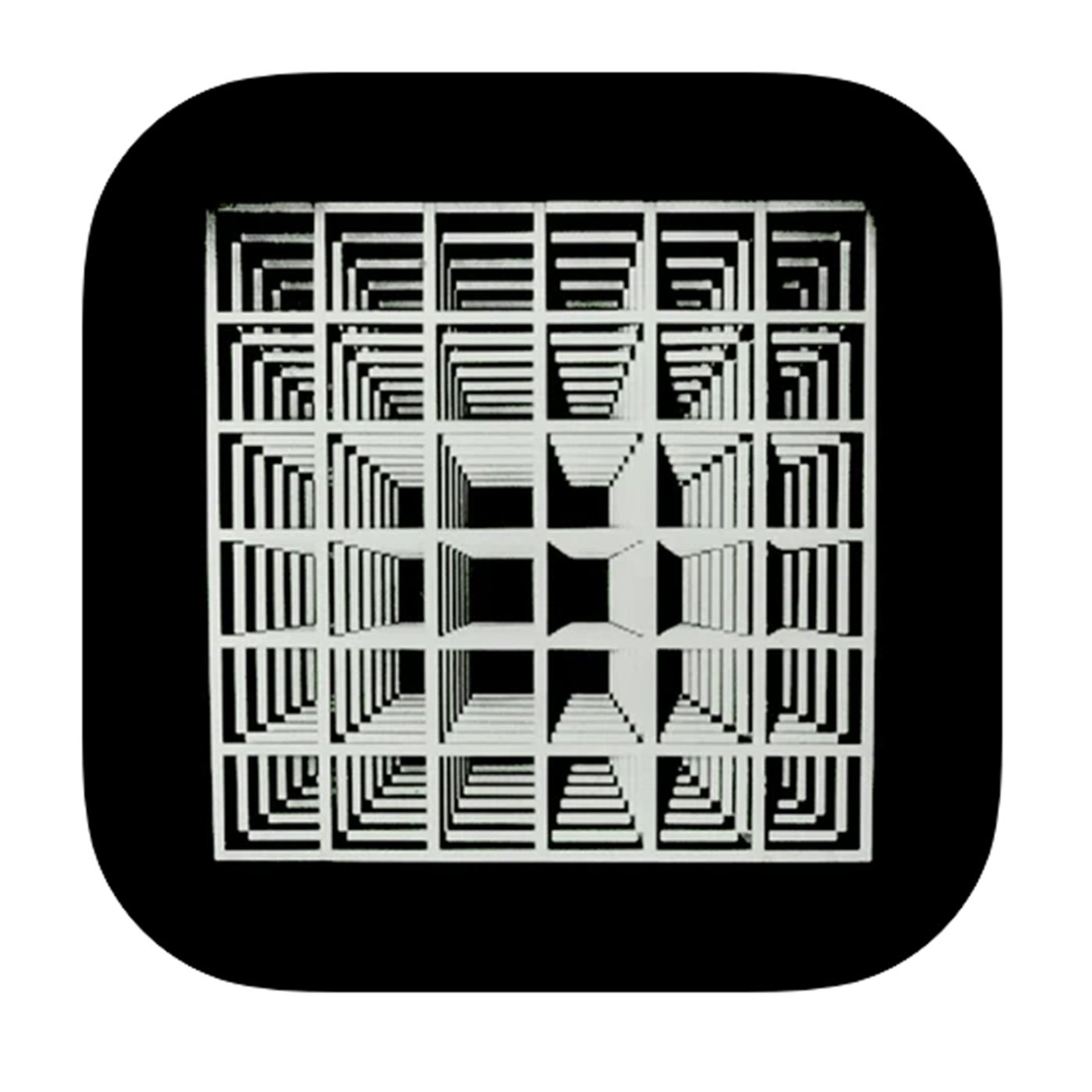
The supremacy of algorithms and logic: the button for Sol Lewitt's app
Still, a better question may be, why, of all artists, did Microsoft select Sol LeWitt as a means to harvest your data? Perhaps because in Sol LeWitt’s work, the technology industry sees itself—the supremacy of algorithms and logic. Sure. But I can’t help but notice the demographic resonance between Sol LeWitt and most of the executives within Silicon Valley. They also have similar taste in glasses.
Guest Critic's Note
Chris Cohoon, Manager of Education & Public Engagement, Monterey Museum of Art: A tech giant, such as Microsoft, investing its resources to create an app exploring Sol LeWitt’s studio and works does not compute. Sure, they were looking for a way to show us the great potential of their tools for education and other market segments. But there are plenty of scientists and engineers with which to christen such an app. And, let’s face it, tech companies and their employees are not widely known as ardent patrons or collectors. Give your brain a few seconds to process the data, however, and LeWitt makes perfect sense.
If you want to inspire programmers and software engineers to embrace creativity through art, or you want to recruit young, artistically inclined students to become programmers and digital innovators, find a bridge to connect worlds. Sol LeWitt, often lauded as the father of Minimalism and Conceptual Art, was an analog programmer at heart. His serial works take a step-by-step (line-by-line), systematic approach to move from one object or idea to another. Most notably, his wall drawings exist, not as objects on a wall, but as sets of instructions for fabricators to execute. He was thinking algorithmically, but in a loose, airy way that introduced a purposeful vagueness so that the artefact created was as influenced by the fabricator’s interpretation as it was by LeWitt’s instructions.
One could go on about the connections of elegant code and Minimalism, conceptual art and the intangibility of software, or LeWitt’s ubiquitous remark that “the idea becomes a machine that makes art". It is much more inspiring, however, to visit Microsoft’s app and dive into LeWitt’s world. As an artist, stepping into the studio for a virtual tour is fascinating. His work was all about process, and this contextualises process in space. As an educator in the age of Covid, I find the app a goldmine. It flows seamlessly from encyclopaedic text and illustration to video and audio of LeWitt. I cannot wait to create an algorithmic art history curriculum, à la LeWitt, for students to interact with the app and see how they process new data.
They say
Immerse yourself in the mind and process of Sol LeWitt ... art lovers can get an unprecedented inside look at his life and workMicrosoft In Culture
Microsoft In Culture: Immerse yourself in the mind and process of Sol LeWitt. Sol LeWitt’s larger-than-life wall drawings are acclaimed around the world. He influenced an entire generation of artists as a founder of Conceptual and Minimal art. And now, thanks to a new app, art lovers can get an unprecedented inside look at his life and work.
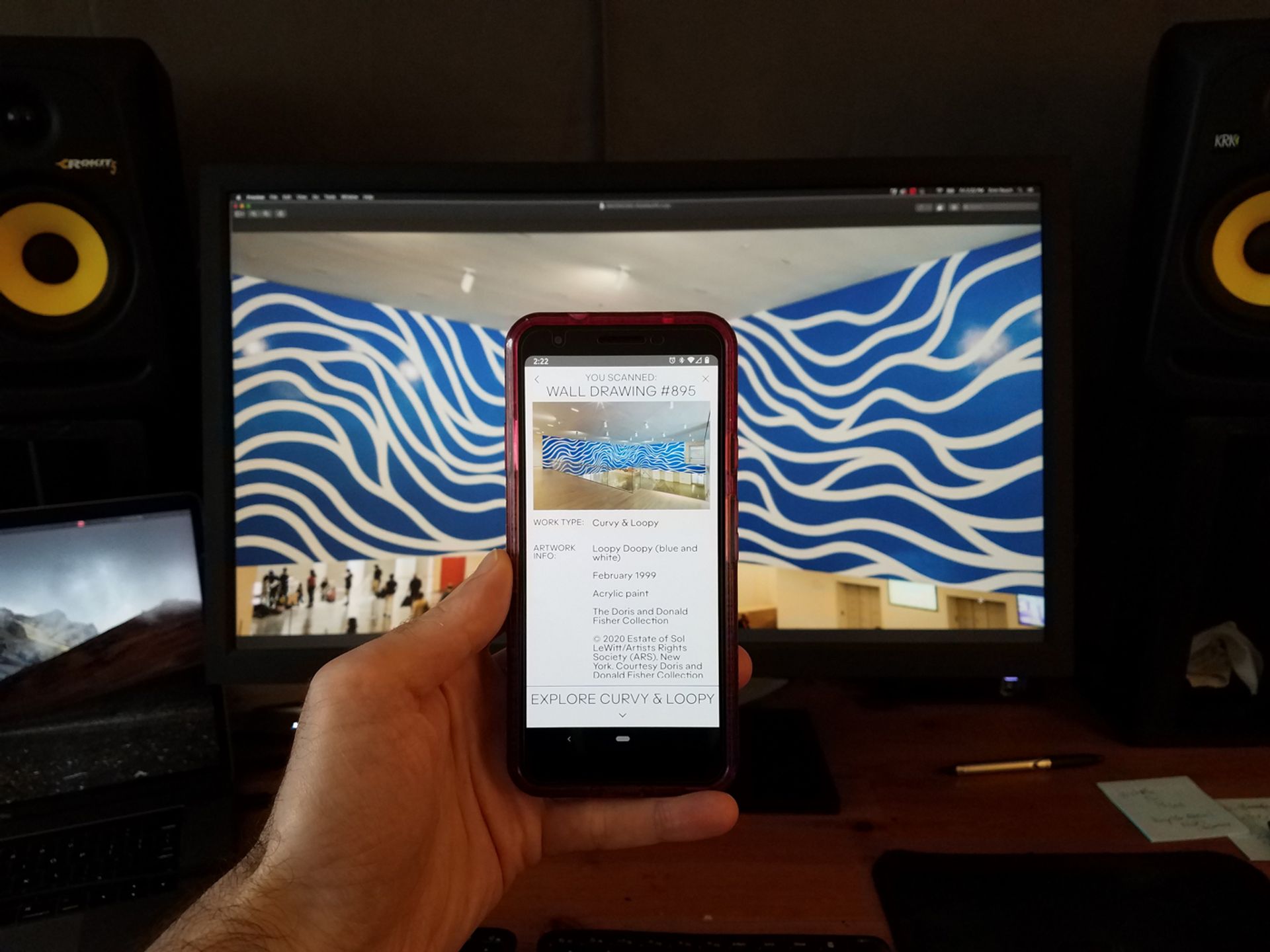
This app is a package of a number of different common techs, including the ability to photograph a LeWitt you’re visiting to get a quick art history 101 lesson on the work and similar works in his oeuvre
The XR panel's ratings
Giving an overall panel rating of 4.5/5 stars.
We Say:
The interactive content’s bite-sized format successfully leads us to snack on towards the next bit, as we move through the studio and the defining moments of LeWitt’s lifeCarole Chainon
Carole Chainon: Microsoft’s Sol LeWitt app is richly immersive and interactive. It delivers on its technical promise to democratise his work.
Upon opening the app, we are ushered into an in-depth journey through LeWitt’s oeuvre and his artistic approach. We get a first-hand look at his studio, zoom into the multitude of wall clippings, and inspect the intricate decor that surrounded him when he created. As we click on items in LeWitt’s studio, we hear him, see him and get an intimate feel for his evolving artworks through the timeline feature. The interactive content’s bite-sized format successfully leads us to snack on towards the next bit, as we move through the studio and the defining moments of LeWitt’s life.
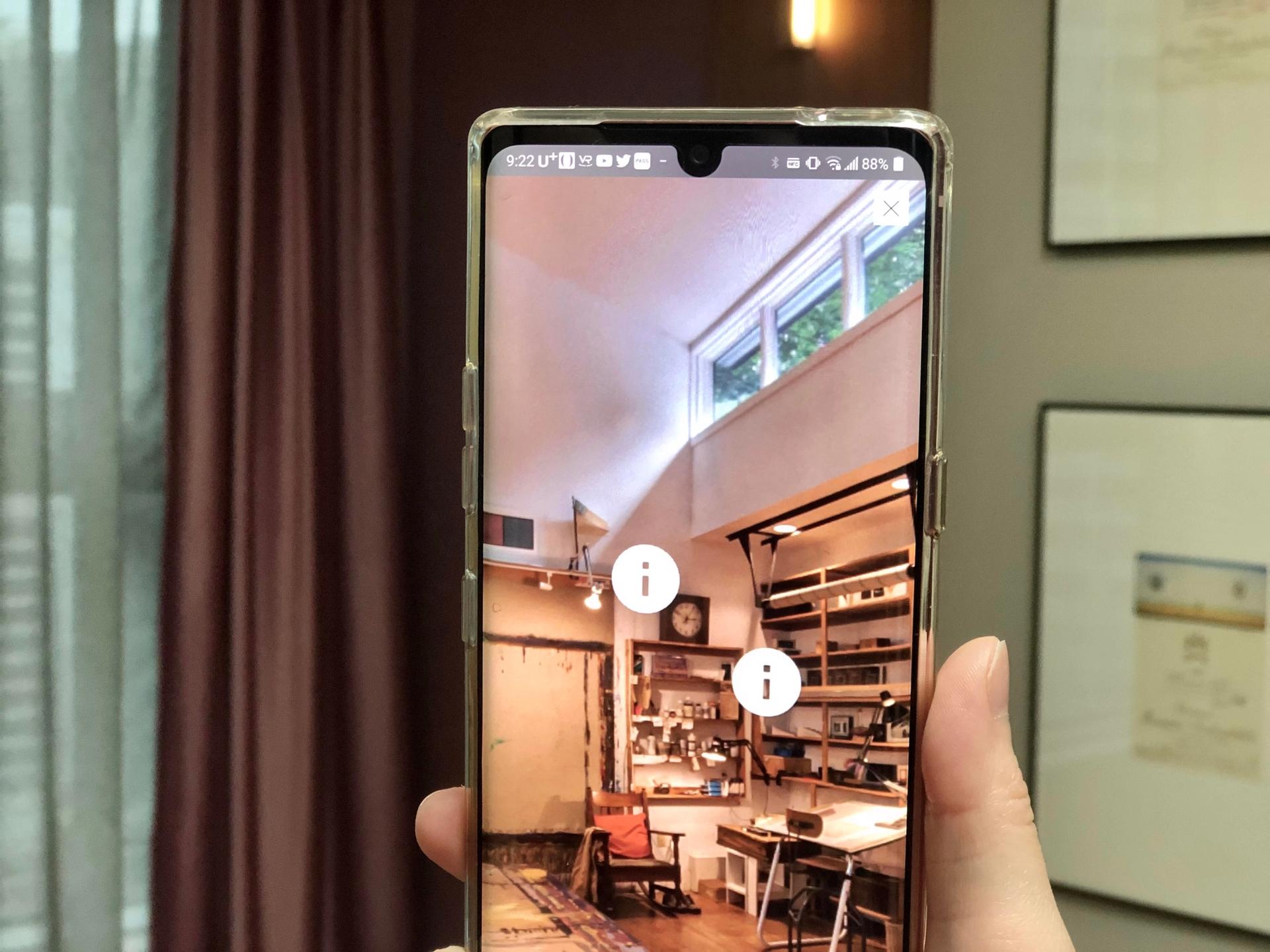
The app allows the viewer to move through the studio and the defining moments of LeWitt’s life
The app’s scanning feature helps us to learn more about his inspiration and technique by scanning the real-life works of art, or, for lack of access to the physical works, by resorting to a Google Image search. When particularly moved by a piece, we peel away the layers of information to get to a deeper understanding of it.
The app’s features include a 360° virtual tour, image recognition, artificial intelligence, geo-localisation and a vast library of content including never-seen-before drawings, with all functions available on both Android and iOS.
In spite of its lengthy loading times (which can lead one to wonder whether the features are unavailable — including the virtual tour and the timeline features), the app successfully makes use of different facets of immersive technologies to introduce Sol LeWitt’s work to a greater audience and immerse us in delightful and intimate moments with the artist and his legacy.
Is the app easy to use?
The whole app is excellently designed in a high-key, line-art style, so its intentions and actions are quite legible while still having a unique vibeEron Rauch
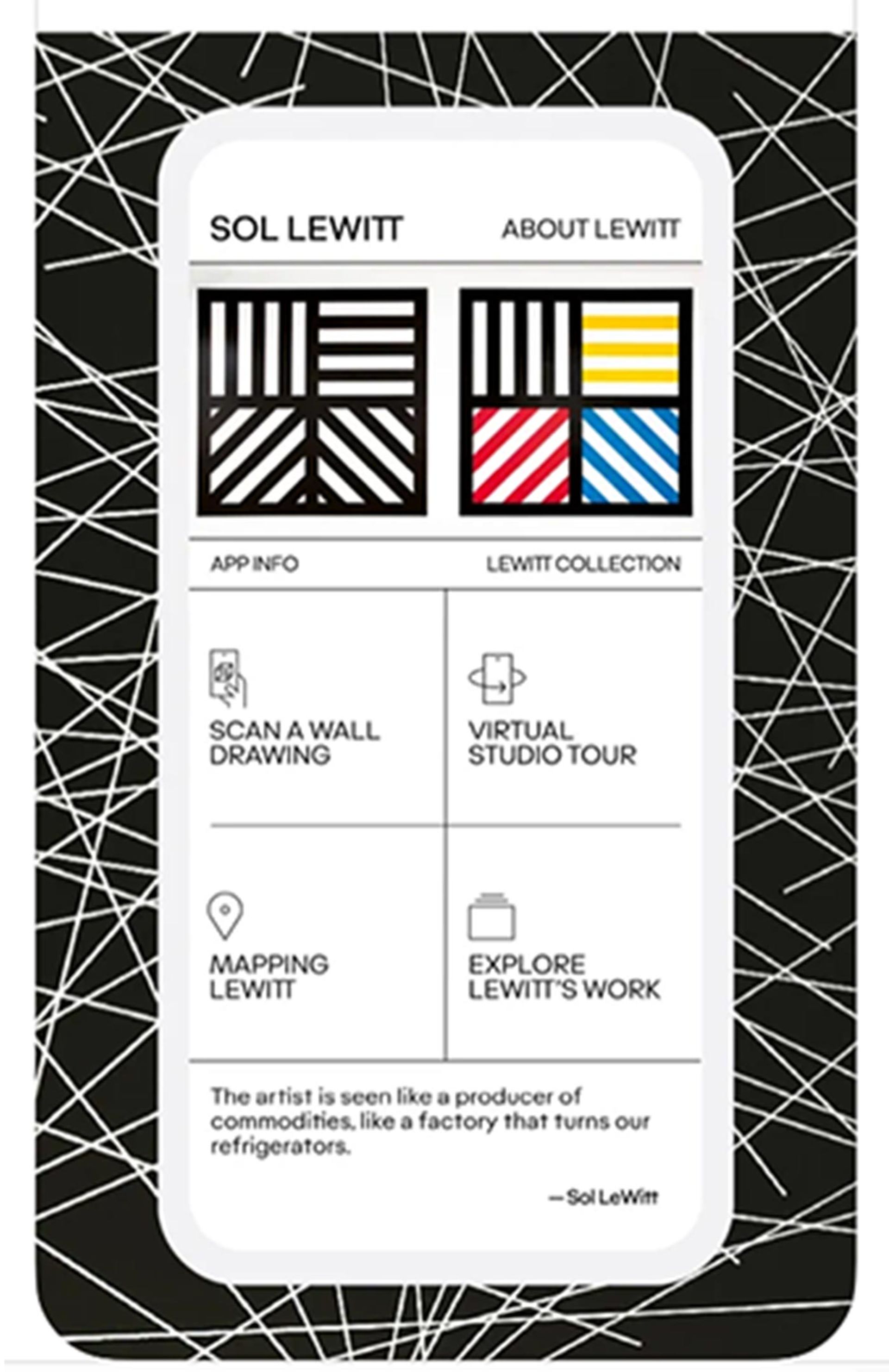
The app has a high-key line-art design on the same wavelength as LeWitt's art
Dhiren Dasu: It boasts a clean aesthetic that immediately transports the user into Sol LeWitt’s world. I found it easy and intuitive to navigate. I did appreciate that the various sections were accessible from the top level without excessive clickery.
Seol Park: The app is well designed with clean user interface on the same wavelength as LeWitt's art. The integration of various multimedia experiences—encompassing text, images, recordings, and smartphone-based VR—is thoughtful and seamless.
Eron Rauch: The whole app is excellently designed in a high-key, line-art style, so its intentions and actions are quite legible while still having a unique vibe. However, it has instances of multi-folded UI and siloed sections which made it challenging for me to draw connections between all the information it presents. For instance, there is no interlinking between the Timeline and the Themes sections. This might be exacerbated by the slightly cramped feeling on a phone; perhaps a tablet would feel more fluid?
How good is the art?
Lindsay Aveilhé's expertise in LeWitt's wall drawings shines in the selection of the work, as it sends the user on a treasure-hunt for LeWitt's installations around the worldSeol Park
Dhiren Dasu: The work is excellent, multi-dimensional, and engrossing. The ripples of LeWitt's concepts are still strong and resonant. I particularly relate to his view of seriality. In my own practice, I’ve found that following a few simple rules before any manifestation of an artwork are extremely liberating. It is counter-intuitive but I find that such an approach allows one to zone in on an artistic direction and inspiration without being frozen in option paralysis.
Seol Park: It must have been difficult to decide which pieces to feature in this app from the oeuvre of a master so prolific. Lindsay Aveilhé's expertise in LeWitt's wall drawings shines in the selection of the work, as it sends the user on a treasure-hunt for LeWitt's installations around the world. By pairing that selection with the spatial interactivity of AR/VR, it delivers a solid experience as enjoyable as it is immersive and informative.
Eron Rauch: The visual works presented are quite good, though limited. Given the clear information focus of the app—this might be the first app I’ve seen with an academic citations section in the footer—the research is much more the core of the experience. But sometimes individual moments could use a bit more meat. In the 1992 Timeline entry, for example, the citations have almost as much text as the entry proper!
What is gained by viewing in VR/AR rather than In Real Life?
There really is no practical way to have an experience akin to this in any other medium besides VRDhiren Dasu
Dhiren Dasu: LeWitt’s work is spread across North America, Europe, the Far East, and Australia. There really is no practical way to have an experience akin to this in any other medium besides VR. The detailed information about the work, his interactive timeline, and studio tour are just not accessible In Real Life (IRL) to most users.
Seol Park: I enjoyed virtually visiting LeWitt's studio in Chester, Connecticut. Seeing the trees and the light outside LeWitt's studio windows overlaying the view of high-rises outside my window in Seoul's urban jungle was especially pleasant. Also, the world map feature makes the app's content relatable to a broad audience in terms of users' locations; for one, I learnt something new—that Sol LeWitt was stationed in Korea for 11 months during the Korean War.
Eron Rauch: The app seems best utilised as a cybernetic appendage to a physical visit with one of LeWitt’s wall drawings. To put it in another way, the app isn’t rich enough to supplant a decent documentary (I recommend Sol LeWitt: Wall Drawings), nor does it come near substituting for seeing these deeply sensory works in person. But it is a nice addition to get someone to spend time unpacking LeWitt during a museum visit, something my pretentious undergrad self could have used.
What medium-specific qualities of VR/AR does it employ?
This app is a package of a number of different common techs, including the ability to photograph a LeWitt you’re visiting to get a quick lesson on the work and similar works in his oeuvreEron Rauch
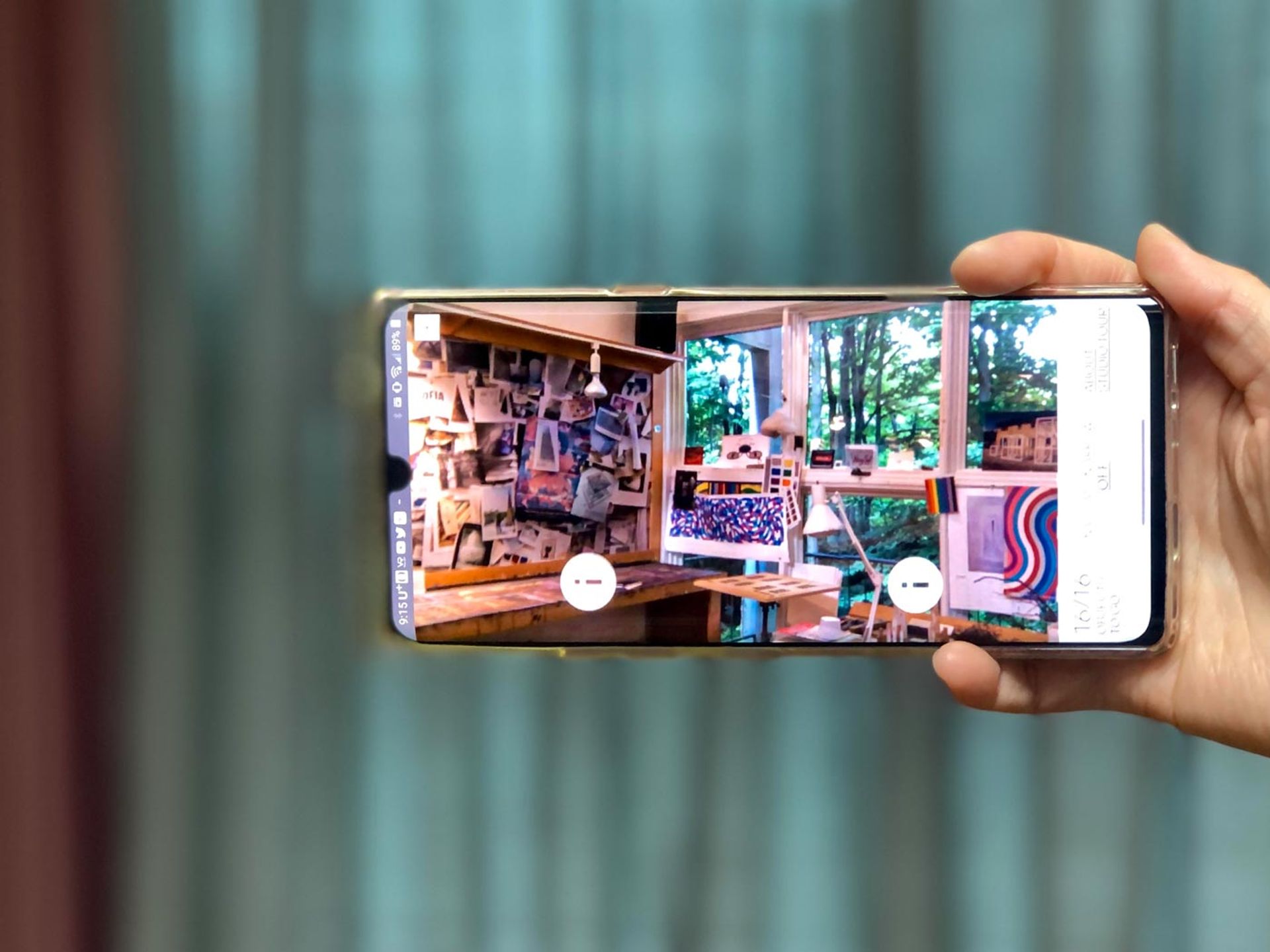
By pairing the selected works with the spatial interactivity of AR/VR, the LeWitt app delivers a solid experience as enjoyable as it is immersive and informative
Dhiren Dasu: An excellent implementation of the artist studio virtual tour is featured in the app. It is well executed and I found it packed full of interesting tidbits. For instance, the link from his studio bulletin board leads to a write-up about the many artists—particularly female—that he championed including Kiki Smith, Laurie Anderson and Adrian Piper. This tidbit gave me appreciation for LeWitt’s generosity as an artist and a person…. A rare and evolved quality in the world of fine art! One technical quirk I noticed was that switching between sections of the app automatically paused my music app (Spotify in this instance ).
Eron Rauch: This app is a package of a number of different common techs, including the ability to photograph a LeWitt you’re visiting to get a quick lesson on the work and similar works in his oeuvre. Maybe because I’m weirdly fascinated with slippage between the faux delineation between “real” and “virtual”, I immediately tested to see if I could do this with a photo of a LeWitt on my computer screen, and sure enough, you can.
Does it break new ground technically?
Often the biggest hurdle in getting people to buy into any given AR experience is the fact that the apps in question do not offer much beyond 'quick attractions' ... The Sol LeWitt app overcomes that hurdle not with technology alone but rather with the comprehensiveness of contentSeol Park
Dhiren Dasu: The depth and breadth of the content in the app is ground breaking. It is excellent to be able to view where his works are located geographically. The bespoke map is both effective and interesting to navigate. In all the areas that matter, the Sol LeWitt app is an unqualified success. Kudos to the team for a stellar experience.
Seol Park: Often the biggest hurdle in getting people to buy into any given AR experience is the fact that the apps in question do not offer much beyond "quick attractions". People generally do not want to weigh down their smartphones with yet another app that they are not going to use multiple times. The Sol LeWitt app overcomes that hurdle not with technology alone but rather with the comprehensiveness of content. This would serve as a good reference point for the art world.
Eron Rauch: One very cool feature is that the dynamic map has the same visual theme as the rest of the app and has the timeline integrated into the bottom. This sounds tiny, but having the dynamic aspects and the more static UI elements the same makes the experience far more integrated than the standard “slap a Google map plug-in in it” approach. It feels akin to bringing up a map in a video game if that reference point helps describe the feeling.
The Art Newspaper’s XR Panel
Gretchen Andrew is a Search Engine Artist and Internet Imperialist who has manipulated the US presidential election with art and desire. Her next exhibition is with Annka Kultys in February 2021.
Dhiren Dasu is a digital media creator and consultant. His areas of speciality include photography, film, virtual space, graphic design, visual effects, animation, and audio production. Dasu, in his fine art persona as Shapeshifter7, makes artworks that echo and recompose the architectural spaces he photographs, turning them into immersive spaces while exploring the nexus of photography, collage, symbols, and perception.
Carole Chainon is the co-founder of JYC, an XR development and production studio based in LA with a presence in Europe, creating XR experiences for the entertainment and enterprise sector. She is also a Spark AR Creator.
Seol Park bridges technology, art, and branding. After working with Microsoft and INTEL, she now guides global branding at LG with emphasis on digital and cultural engagement. Her past work in XR have appeared in Media-N, ABC TV (Australia), The Southern Star (Ireland), and more. She was named in Sotheby's Institute's "4 Under 40" in 2019, and currently serves on the Board of Trustees for The American Folk Art Museum.
Eron Rauch is an artist, writer, and curator whose projects explore the infrastructure of imagination, with a focus on subcultures, video games, and photography history.


